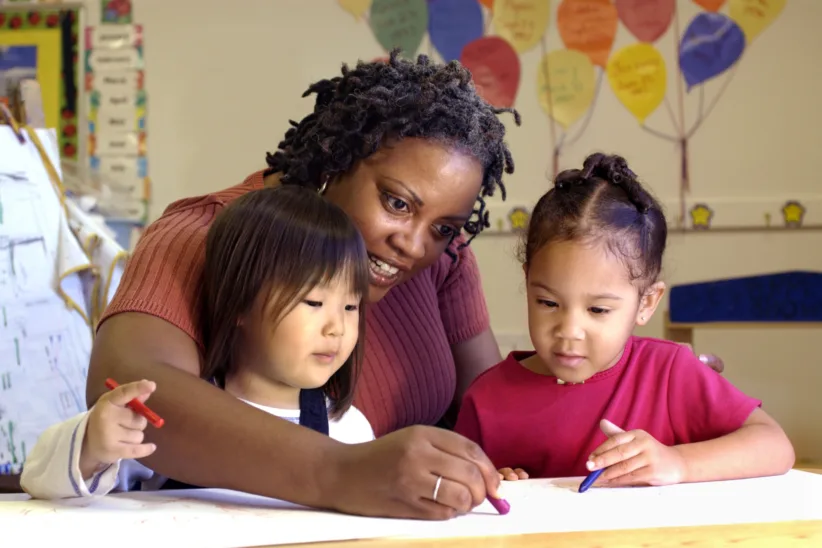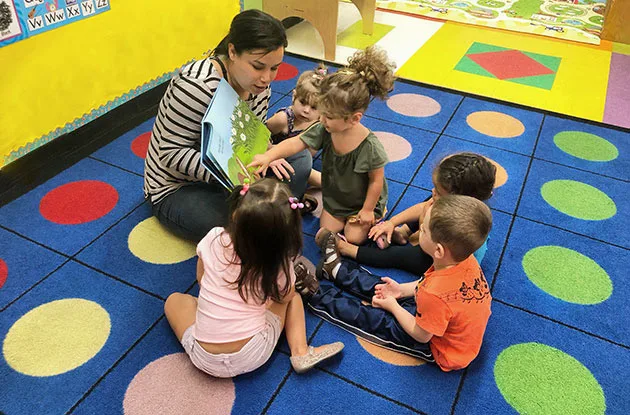See what Donald Trump and Hillary Clinton have included in their child care plans.
With the rise of companies announcing paid parental leave for new parents—Netflix, Chobani, Facebook, and Coca-Cola to name a few—child care issues are at the forefront for working moms and dads in the U.S. But how will the 2016 Presidential election effect child care policies?
Now that both the Democratic and Republican candidates have released their child care plans, we took a look at how they stack up against each other, and how each candidate’s plans will benefit working moms and dads in the U.S.
Hillary Clinton’s Child Care Plan
Clinton’s child care plan includes proposals to make child care more affordable, improve the quality of child care, improve early childhood education, and support parents who are enrolled in college. Clinton’s plan, outlined on HillaryClinton.com, includes seven proposals that will:
• Increase child care investments so no family has to pay more than 10 percent of its income to afford high-quality child care. Clinton plans to make this happen by significantly increasing the federal government’s investment in child care subsidies and providing tax relief for the cost of child care.
“The cost of child care has increased by nearly 25 percent during the past decade, while the wages of working families have stagnated. While families across America are stretched by skyrocketing costs, child care has become more important than ever before—both as a critical work support for the changing structure of American families and as an essential component of a child’s early development,” according to HillaryClinton.com.
• Improve the quality of child care and early learning by supporting the child care workforce through Clinton’s Respect and Increased Salaries for Early Childhood Educators initiative. RAISE will fund and support states and communities that work to increase the pay of child care providers and early educators by investing in educational opportunities, career ladders, and professional salaries.
• Expand access to evidence-based home visiting programs. “There is increasing scientific evidence that brain development in the earliest years of childhood is crucial to economic success,” according to HillaryClinton.com. These programs—which provide home visits by a social worker or nurse during and directly after pregnancy—improve the health of the mother and child, development, and learning.
• Make preschool universal for every 4-year-old. Clinton will work to ensure every 4-year-old has access to high-quality preschool in the next 10 years.
• Double the investment in Early Head Start and the Early Head Start–Child Care Partnership program to double the number of children being served. Early Head Start provides comprehensive services—health, nutrition, pre-literacy support, social and emotional development support—to young learners, while the partnership program brings the Head Start curriculum into child care settings for low-income families.
• Award scholarships of up to $1,500 per year to help student parents afford high-quality child care. More than 25 percent of college students—as many as 1 million—are balancing school with raising a child. To support such students, Clinton will launch Student Parents in America Raising Kids, which will award the scholarships.
• Increase access to high-quality child care on college campuses for college students who are parents. “College students who are parents leave school with an average debt that is 25 percent higher than non-parents,” according to HillaryClinton.com. Clinton will work to increase child care on campuses by increasing funding for campus-based centers.
Clinton also has a plan for paid leave, which will guarantee up to 12 weeks of paid family and medical leave for men and women to care for a newborn or ill family member, plus up to 12 weeks of medical leave to recover from an illness or injury of their own. With this plan, workers would get at least two-thirds of their wages, up to a ceiling, while on leave, and there would be no additional costs on businesses of any size. This leave will be paid through tax reforms that “will ensure the wealthiest Americans pay their fair share,” according to HillaryClinton.com.
“Too many moms have to go back to work just days after their babies are born…And too many dads and parents of adopted children don’t get any paid leave at all. Neither do sons and daughters struggling to take care of their aging parents. None of this is fair to families,” Clinton said in her speech at the 2016 International Convention for Service Employees International Union in Detroit on May 26.
Donald Trump’s Child Care Plan
Trump’s child care plan “proposes an innovative plan to bring federal tax policies in line with the needs of today’s families,” according to a press release on donaldjtrump.com. This press release states the four major proposals of Trump’s child care plan:
• The tax code will be re-written to allow working parents to deduct child care expenses for up to four children and elderly dependents from their income taxes. This deduction will be available for taxpayers who take the standard and itemized deductions on their tax returns. It will be capped at the average cost of child care in the state of residence. Individuals earning more than $250,000 ($500,000 if filing jointly) will not be eligible.
In a speech unveiling his child care policy in Aston, PA, on Sept. 13, Trump said this includes adoptive parents and foster parent guardians.
This proposal will also offer child care rebates to lower-income taxpayers through the existing Earned Income Tax Credit. Plus, it will ensure stay-at-home parents will receive the same tax deduction as working parents.
“Families with a stay-at-home parent will be able to fully deduct the average cost of child care from their taxes,” Trump said in his Sept. 13 speech.
• Dependent Care Savings Accounts will be created so that families can save money to foster the children’s development or to offset elder care for their adult dependents. These accounts will be made available to everyone and allow tax-deductible contributions and tax-free interest.
“Families can contribute up to $2,000 dollars a year to these accounts completely tax-free,” Trump said in his speech. “The funds will remain in the account until the age of 18. Whatever still remains at that time can be used to help offset the costs of higher education.”
The funds in these accounts can be used for child care, after-school enrichment programs, and school tuition (for elderly, the funds can cover services such as in-home nursing and long-term care). For lower-income parents, the government will match half of the first $1,000 deposited into the account each year.
• The plan will provide regulatory reform to promote new family- and community-based solutions. It will also add incentives for employers to offer child care services in the workplace.
• It will guarantee six weeks of paid maternity leave by amending the unemployment insurance companies are required to offer. This would only apply if companies don’t already offer paid maternity leave, and would be paid for by offsetting reductions in the programs to prevent taxes from being raised.
Images: Donald Trump: Modified: Flickr/Gage Skidmore/CC 4.0; Hillary Clinton: Modified: Visions of America LLC/123RF
RELATED: Find a Child Care Provider Near You





















